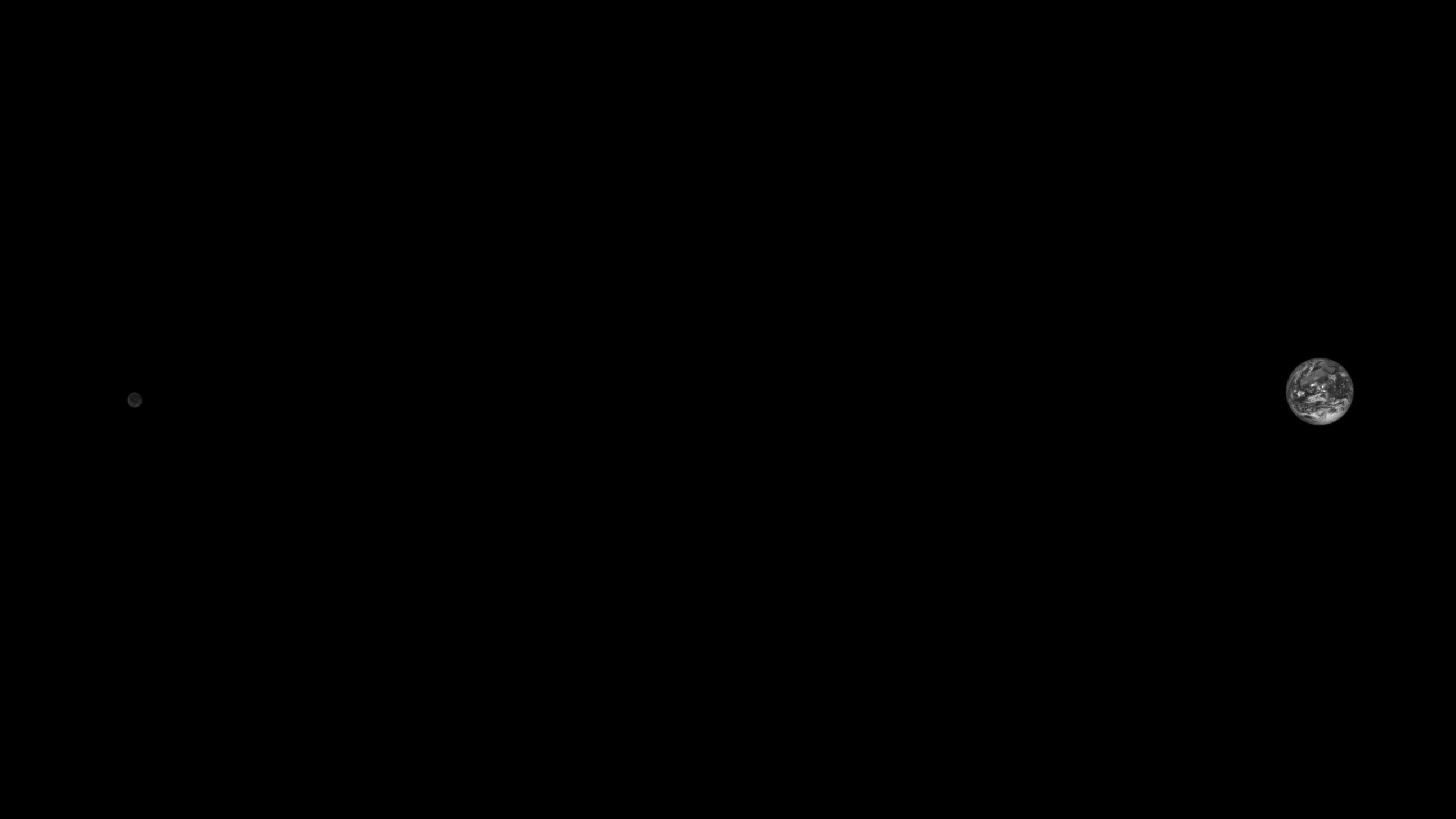NASA asteroid surveyor snaps stunning views of Earth and moon on way to Jupiter's Trojans
The Lucy spacecraft took a magnificent photo of the Earth from nearly 400,000 miles away.

NASA's Lucy mission executed the first of three planned slingshot maneuvers around Earth this month in preparation to study Jupiter's Trojan asteroids, but the spacecraft made sure to take some stunning photos of Earth and the moon before retreating into deep space.
The images, taken on Oct. 13 and Oct. 15 as Lucy began its approach toward Earth for a gravity-assisted speed boost on Oct. 16, are more functional than a couple of simple snapshots. The images were taken to help calibrate Lucy's Terminal Tracking Camera (T2CAM) system, which features two identical cameras that the spacecraft will use to pinpoint and track target asteroids as it zips past at high speeds.
The first image, taken on Oct. 13, highlights the incredible distance between the Earth and the moon. At the time, the two bodies sitting at opposite edges of the frame were about 890,000 miles (1.4 million kilometers) away from Lucy, according to a NASA statement. Mission personnel also intended to have the spacecraft photograph the moon on its way back into deep space.
Related: NASA's asteroid explorer Lucy spotted disappearing moon during the lunar eclipse
The second photo, snapped two days later, is a close-up shot of the Earth as Lucy approached, taken at a distance of roughly 380,000 miles (620,000 km). In the image, Hadar, Ethiopia, is just visible on the left-most edge of the planet, giving Lucy (and us) a cosmic-eye glimpse of the spot where the 3.2-million-year-old human ancestor fossil for which the mission is named was discovered.
Lucy will be making three flybys of Earth in total, using Earth's gravity on its approach to speed itself up so it can start its years-long voyage to Jupiter's Trojan asteroids. During the first flyby, Lucy came within just 220 miles (350 km) of the Earth's surface — a lower altitude than the International Space Station and many satellites and close enough for sharp-eyed skywatchers on the ground below to spot it.
Lucy will be the first spacecraft to visit Jupiter's Trojan asteroids, so named because they orbit the sun at the same distance as Jupiter, both in front of the planet and behind it. They occupy two of the five Lagrange points of Jupiter, the only locations where a stable orbit so close to the gas giant is possible.
Breaking space news, the latest updates on rocket launches, skywatching events and more!
During its 12-year mission, Lucy is set to fly by nine asteroids, including one in the main asteroid belt, to study their composition, density and diversity. While that's an impressive number of asteroids to study in one go, there are as many as 12,000 Trojan asteroids orbiting with Jupiter, according to the International Astronomical Union. Scientists believe these rocks are 4-billion-year-old "fossils" left over from the formation of the solar system.
You can find John on Twitter at @thisdotjohn. Follow us on Twitter @Spacedotcom and on Facebook.
John is a science and technology journalist and Space.com contributor. He received his B.A. in English and his M.A. in Computer Science from the City University of New York, Brooklyn College, and has bylines with TechRadar, Live Science, GamesRadar, and other publications. You can find him on Bluesky at @johnloeffler.bsky.social or seeking out dark sky country for spectacular views of the cosmos.

